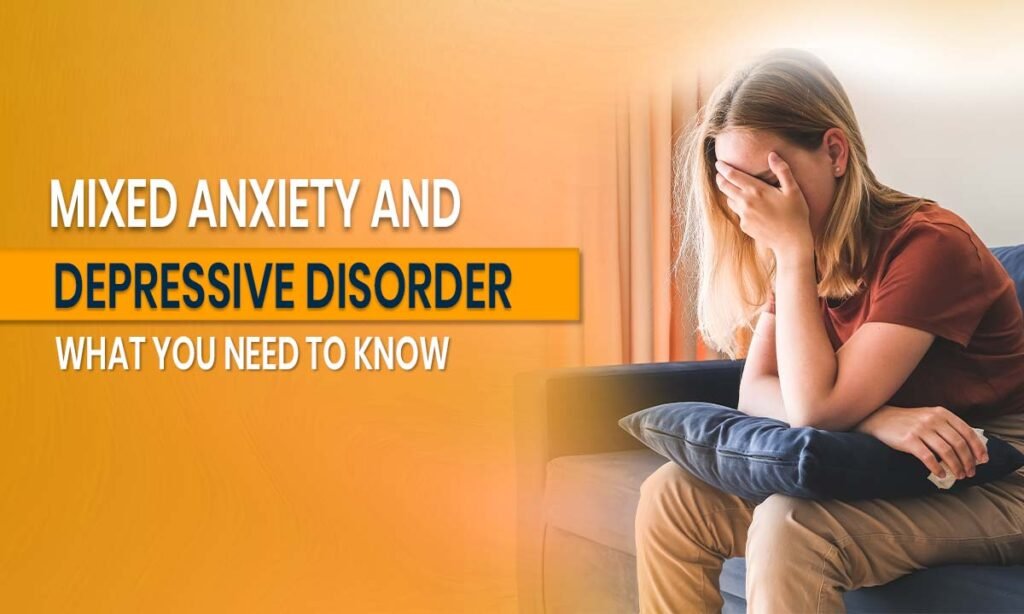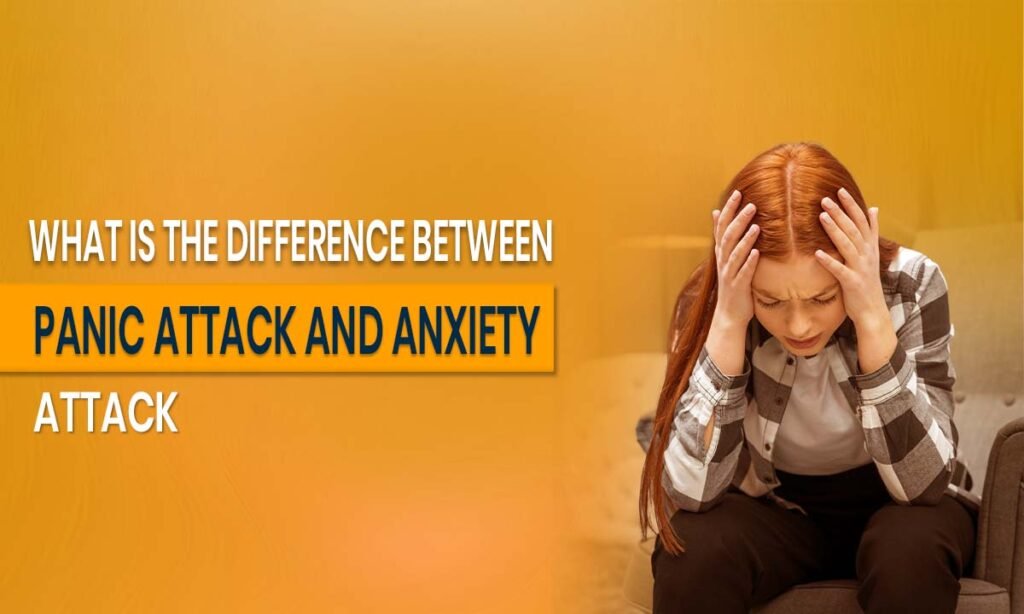
Mental health conditions can often be challenging to diagnose and treat, especially when symptoms overlap. Mixed Anxiety and Depressive Disorder (MADD) is one such condition, where individuals experience a blend of both anxiety and depression. These symptoms can interfere with daily life and make it difficult for individuals to manage their emotional well-being. It’s crucial to recognize the signs of MADD, as proper treatment can help individuals lead a healthier and more fulfilling life.
In this post, we will delve into the symptoms, treatment options, and medications for mixed anxiety and depressive disorder, providing an in-depth understanding of the condition and how it is classified.
What is mixed anxiety and depressive disorder?
Mixed anxiety and depressive disorder involves experiencing a combination of anxiety and depressive symptoms simultaneously. However, the severity of these symptoms may not be enough for a diagnosis of Generalized Anxiety Disorder (GAD) or Major Depressive Disorder (MDD) individually.
This can be a particularly tricky disorder to diagnose due to its overlapping nature with other mental health conditions. Commonly, individuals with MADD may feel persistently anxious while simultaneously feeling drained and depressed. This mixture can severely impact one’s daily life, relationships, and overall functioning.
If you’ve been feeling both excessively worried and down for an extended period, mixed anxiety and depressive disorder might be at play.
Mixed Anxiety and Depressive Disorder Symptoms
Symptoms of MADD combine both anxiety and depression, which can make diagnosis complex. Here are some of the common signs to look out for:
- Persistent sadness and feelings of hopelessness
- Restlessness and irritability
- Fatigue and lack of energy
- Excessive worry, even about minor matters
- Difficulty concentrating and making decisions
- Changes in sleep patterns (too much or too little)
- Physical symptoms such as headaches, muscle tension, or digestive problems
- Loss of interest in previously enjoyable activities
These symptoms can vary in intensity and can sometimes overlap with other conditions like generalized anxiety disorder or major depression. However, in MADD, both sets of symptoms occur simultaneously, though they may not fully meet the diagnostic criteria for each disorder.
Diagnosis: Mixed Anxiety and Depressive Disorder ICD-10
In the ICD-10, the diagnostic classification for mixed anxiety and depressive disorder is F41.2. This system helps healthcare providers categorize mental health conditions, making it easier to track and manage diagnoses.
The ICD-10 code F41.2 is particularly helpful for medical billing and ensuring consistency in diagnoses. If you’re seeking treatment, knowing your diagnosis code can help healthcare providers determine the best course of action for treatment. It’s crucial to understand this classification when discussing your condition with professionals and insurers.
Treatment Options for Mixed Anxiety and Depressive Disorder
There is hope for those affected by MADD through a combination of therapy, medications, and lifestyle adjustments. Tailored treatment plans can alleviate symptoms and improve daily functioning. Below are some of the most effective treatment methods for MADD:
1. Psychotherapy and Counseling
One of the first lines of treatment is cognitive-behavioral therapy (CBT), a proven method to help individuals identify and alter negative thought patterns contributing to both anxiety and depression. CBT focuses on teaching coping mechanisms and problem-solving skills to better manage emotional distress.
Other therapeutic approaches may include interpersonal therapy (IPT), which focuses on improving relationships and addressing interpersonal issues that may be contributing to the mental health challenges.
2. Medication for Mixed Anxiety and Depressive Disorder
Medication can play a significant role in managing MADD. Some common medications used for this condition include
- Selective serotonin reuptake inhibitors (SSRIs), such as sertraline and fluoxetine, are commonly prescribed to address both anxiety and depressive symptoms.
- Serotonin-norepinephrine reuptake inhibitors (SNRIs), including venlafaxine and duloxetine, may also be recommended to balance the levels of neurotransmitters.
- Benzodiazepines, which are often used for short-term relief from anxiety symptoms. However, they are typically prescribed with caution due to the potential for dependency.
- Antidepressants, such as mirtazapine, can help alleviate the depressive symptoms associated with MADD.
Consulting with a healthcare provider is essential to determine the most suitable medication and dosage, as different medications work differently for each individual.
3. Lifestyle Adjustments and Self-Care
Incorporating lifestyle changes can help individuals manage MADD symptoms effectively. Consider implementing the following:
- Regular physical activity to reduce stress and improve mood.
- A balanced diet with nutrient-dense foods to support mental and physical health.
- Mindfulness and relaxation techniques such as yoga or meditation to reduce stress and calm anxiety.
- Adequate rest and proper sleep hygiene to improve emotional regulation and reduce fatigue.
These self-care measures can complement professional treatment and help individuals maintain emotional balance.
When to Seek Help
If you are struggling with symptoms of mixed anxiety and depressive disorder, it’s crucial to seek professional help. Untreated MADD can lead to worsening symptoms and further complications. A mental health professional can evaluate your symptoms, provide a proper diagnosis, and help you develop an effective treatment plan.
The right support can significantly improve your quality of life and help you manage mixed anxiety and depressive disorder effectively. Don’t hesitate to reach out to a healthcare provider who can guide you on your path to healing.
Conclusion
Mixed Anxiety and Depressive Disorder (MADD) is a complex and often misunderstood condition, but with the right support, individuals can manage their symptoms and lead fulfilling lives. By understanding the symptoms, diagnosis, and treatment options, individuals can better navigate the path to recovery.
If you or someone you know is experiencing symptoms of MADD, it’s important to take the necessary steps to seek professional help. With a combination of therapy, medication, and lifestyle changes, managing mixed anxiety and depressive disorder is entirely possible.
Remember, mental health is just as important as physical health. If you are struggling with addiction or any mental health issue, don’t panic. Contact Athena Luxus for the support and guidance you need. Book your appointment now, and let us help you find the balance you deserve.
Patient Experiences
Ravi Sharma: I had been struggling with anxiety and depression for months, but it wasn’t until I came to Athena Luxus that I found real relief. The treatment plan tailored to my needs was a game-changer. The luxury setting helped me feel comfortable and supported throughout my recovery.”
Priya Patel: I never knew that mixed anxiety and depressive disorder could affect me this way. But after joining Athena Luxus, I received expert care that helped me navigate my emotions. The comprehensive therapy and personalized approach made all the difference.”
Arjun Gupta: I tried so many therapies before, but Athena Luxus’ premium care was the only one that helped me regain control over my life. The combination of therapy, lifestyle changes, and medication worked wonders for my mental health.”
Neha Reddy: I was skeptical about rehab centers at first, but Athena Luxus changed my perspective. The exclusive treatment options, along with the understanding staff, made all the difference in my recovery journey. Highly recommend to anyone struggling with mental health!
For those dealing with addiction, proper treatment is essential. Athena Luxus provides specialized programs designed to help with a range of addiction recoveries. If you’re looking for support for substance use, consider the following treatment options:
- Alcohol Detox Treatment
- Cocaine Addiction Treatment
- Drug Addiction Treatment
- Heroin Addiction Treatment
Frequently Asked Questions (FAQ)
What is Mixed Anxiety and Depressive Disorder?
Mixed Anxiety and Depressive Disorder (MADD) is a mental health condition where a person feels both anxious and depressed at the same time. These feelings often happen together and can be very confusing and tiring for the person going through it.
Can You Have a Mix of Anxiety and Depression?
Yes, they often occur together and can make daily life harder. Getting professional help is important to manage both effectively.
What Are the Symptoms of Severe Depression and Anxiety?
Constant sadness, worry, trouble sleeping, restlessness, and focus issues. Get help if these affect your daily life.
What Happens When You Have Both Anxiety and Depression?
When anxiety and depression happen at the same time, they can make each other worse. This can feel like a constant mental struggle, making you feel tired and stuck.
Is Mixed Anxiety and Depressive Disorder More Serious Than Major Depression?
MADD isn’t always worse than major depression, but it’s still serious. Anxiety and depression together can worsen symptoms. Getting professional help is very important for recovery.

